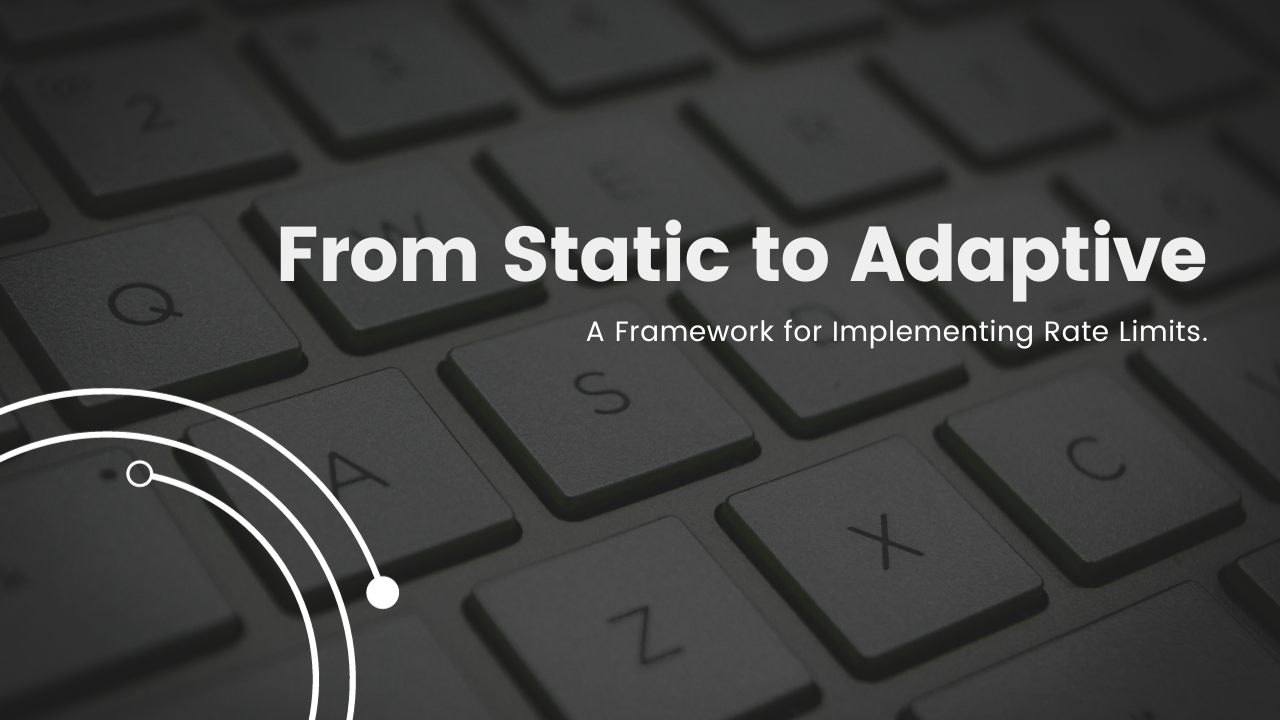From Static to Adaptive
 Akshay Kunchalapalli
Akshay Kunchalapalli
As a developer constantly striving to optimize web applications and servers, I've learned that the journey from static rate limits to adaptive ones is essential for maintaining a seamless user experience. In this blog, I'll discuss the importance of implementing rate limits and provide a framework for doing so effectively. To illustrate this, I'll also share my personal experience when developing a web app/server using the OpenAI API key, which led me to realize the significance of adaptive rate limits.
Understanding Rate Limits
Rate limits are like traffic signals for web applications and servers. They control the flow of incoming requests, ensuring that the system doesn't get overwhelmed. Without rate limits, a sudden surge in traffic or malicious attacks could bring your server to a grinding halt. Traditionally, developers often set static rate limits, allowing a fixed number of requests per unit of time. For instance, you might restrict users to 100 requests per minute.
The Pitfall of Static Rate Limits
While static rate limits are a good start, they can be problematic in dynamic environments. Imagine you have a sudden influx of users, and your rate limit is exceeded. Legitimate users will experience errors or delays, leading to a poor user experience. On the other hand, during quiet periods, you're not maximizing your server's potential. It's a lose-lose situation.
Transitioning to Adaptive Rate Limits
Adaptive rate limits address these issues by dynamically adjusting the rate limit based on the current load and usage patterns. This allows your server to handle sudden traffic spikes gracefully and ensures that resources are efficiently utilized. To implement adaptive rate limits, follow these steps:
Monitor Traffic: Start by collecting data on incoming requests. Tools like Prometheus or custom scripts can help gather real-time traffic data.
Analyze Patterns: Use the collected data to identify usage patterns and peak traffic times. This helps in understanding when and where rate limits should be adjusted.
Implement Logic: Develop a rate-limiting algorithm that takes into account current traffic, historical data, and server capacity. This could be a simple moving average or a more complex machine learning model.
Continuous Adjustment: Periodically update the rate limit based on the analysis. Be prepared to react quickly to traffic spikes or unusual patterns.
My Personal Experience with OpenAI API
Recently, I had the opportunity to develop a web app using the OpenAI API key. Excited to test my server, I started sending requests. However, I quickly exhausted all my API key requests for the day. It was a frustrating experience, but it highlighted the importance of rate limits.
Upon reflection, I realized that a static rate limit would have been a better approach initially, but the true lesson was in the need for an adaptive system. If I had monitored my usage patterns, I could have dynamically adjusted my rate limit to ensure that my testing didn't halt prematurely. It was a valuable lesson in the world of API usage.
In conclusion, transitioning from static to adaptive rate limits is vital for modern web applications and servers. It ensures a responsive user experience while efficiently utilizing server resources. My own experience with OpenAI's API key emphasized the importance of adaptive rate limits, and I hope that by sharing this journey and framework, other developers can avoid similar pitfalls and build more robust and user-friendly applications.
And if you're curious to check out the web app I've implemented using the OpenAI API key, feel free to visit my Github repository: IdeascribeApp Repository. Because, you know, who doesn't love rate limits and the thrill of waiting 24 hours to test it all over again? 😉
Subscribe to my newsletter
Read articles from Akshay Kunchalapalli directly inside your inbox. Subscribe to the newsletter, and don't miss out.
Written by

Akshay Kunchalapalli
Akshay Kunchalapalli
I'm Akshay, a Tech Alchemist and perpetual explorer of the digital universe. With a background in mechanical engineering and a heart that beats for data science, I've woven a tapestry of skills that traverse diverse programming languages like Python, Core Java, and Javascript. I'm the architect behind web marvels, having conjured web applications using Flask and Django frameworks. But true magic lies in collaboration. I am a firm believer in the potency of shared innovation, and as such, I've ventured into the realm of open-source projects. Here, amidst the symphony of diverse minds, I add my unique notes, harmonizing with the grand melody of creation. Beyond the screens, I'm an avid problem-solver, an advocate for efficiency, and a disciple of continuous learning. Join me in unraveling the threads of technology as we weave together innovation and imagination, crafting solutions that resonate in this ever-evolving landscape. Let's explore, experiment, and engineer the future together!